-
+1 519-731-6344
Knowing your enemy is the first step to winning the battle against pests. Use this detailed guide to identify common household and commercial pests, understand their behaviors, and recognize the signs of an infestation. If you're still unsure or need professional help, contact GR Pest Control for expert identification and treatment in Kitchener, Waterloo, and surrounding areas.

Mice, particularly the common house mouse, are small rodents known for their adaptability and ability to reproduce quickly. They are nocturnal and can squeeze through incredibly small openings, making them a common indoor pest.
Mice are highly resourceful and can live without a direct water source, deriving sufficient moisture from the food they eat. This allows them to nest in areas far from traditional water sources. They prefer secluded, dark areas near food, such as within walls, attics, basements, cabinets, and behind appliances. They are curious but wary, constantly exploring new surroundings.
Mice contaminate food and surfaces with their urine, droppings, and hair, posing health risks including salmonellosis. They can also cause significant property damage by gnawing on electrical wires (a fire hazard), insulation, plumbing, and structural elements of a building. Their constant gnawing can lead to costly repairs.

Cockroaches are resilient and ancient insects, notorious for their ability to thrive in various environments, especially where food and moisture are readily available. They are primarily nocturnal and can quickly infest homes and businesses, posing significant health and sanitation issues.
In colder climates like Kitchener-Waterloo, cockroaches frequently move indoors, seeking warmer environments, food, and moisture. They enter houses through sewer connections, under doors, around plumbing, air ducts, or other openings in the foundation. They prefer dark, damp, and warm places, such as kitchens, bathrooms, basements, and behind appliances. They are scavengers, eating almost anything, including food scraps, paper, fabric, and even soap.
Cockroaches are known vectors for various pathogens, including bacteria (like Salmonella and E. coli), viruses, and parasitic worms. They can contaminate food preparation surfaces, food, and utensils, leading to food poisoning, dysentery, and other illnesses. Their discarded skins and droppings can also trigger allergies and asthma attacks, particularly in children.

Wasps, particularly social species like yellow jackets and hornets, are common outdoor pests that can become a significant nuisance and danger when they nest near human activity. Unlike bees, wasps can sting multiple times, and their stings can be painful and dangerous for allergic individuals.
Wasps are considered pests when they become excessively common or build nests close to buildings, entryways, or high-traffic areas. Yellow jackets often nest underground in abandoned rodent burrows or in wall voids, while bald-faced hornets build large, grey, papery nests typically in trees, shrubs, or under eaves. People are most often stung in late summer and early autumn when wasp colonies stop breeding new workers; the existing workers search for sugary foods (like sugary drinks, fruit) and are more likely to come into contact with humans.
The primary threat from wasps is their painful sting. While a single sting is usually just uncomfortable, multiple stings can cause a severe reaction. For individuals allergic to wasp venom, even one sting can trigger a life-threatening anaphylactic shock. Unlike bees, wasps do not leave their stinger behind, allowing them to sting repeatedly. Some species can also be quite aggressive when their nest is disturbed.

Flies are common nuisance pests that can quickly multiply and spread diseases. Various species exist, each with slightly different habits, but all are drawn to decaying organic matter, food waste, and moisture.
Houseflies are a nuisance, disturbing people while at leisure and at work. They are disliked principally because of their habits of contaminating foodstuffs. They alternate between breeding and feeding in dirty places (like garbage, manure, decaying matter) with feeding on human foods. During this process, they soften the food with saliva and deposit their feces, creating a significant health hazard. Cluster flies typically overwinter in wall voids and attics of homes, emerging on warm days. Fruit flies are attracted to decaying fruit, spilled sugary drinks, and moist organic debris in drains.
Flies, especially house flies, are significant vectors of disease. They can transmit over 100 different pathogens, including bacteria (like E. coli, Salmonella, Shigella), viruses, and parasitic worms, causing illnesses such as food poisoning, typhoid fever, dysentery, and cholera. They pick up pathogens on their legs and bodies from decaying matter and then transfer them to food and surfaces when they land. They can also cause economic losses in food processing facilities.

Bed bugs are small, nocturnal insects that feed exclusively on the blood of warm-blooded animals, primarily humans. They are notorious for infesting homes, hotels, and other dwellings, causing irritating bites and significant distress.
Bed bugs typically hide in cracks and crevices during the day and come out at night to feed. Their preferred hiding spots are close to where humans sleep or rest, such as mattresses, box springs, bed frames, headboards, nightstands, and even behind electrical outlets and picture frames. They are excellent hitchhikers and can easily be transported on luggage, clothing, and used furniture.
Bed bug bites can result in a number of health impacts, including itchy skin rashes (leading to secondary infections from scratching), psychological effects (anxiety, insomnia, stress, and paranoia), and in rare cases, allergic symptoms. While they are not known to transmit diseases, their presence causes significant discomfort and can severely impact quality of life. Infestations are also notoriously difficult and costly to eradicate, often requiring professional intervention.
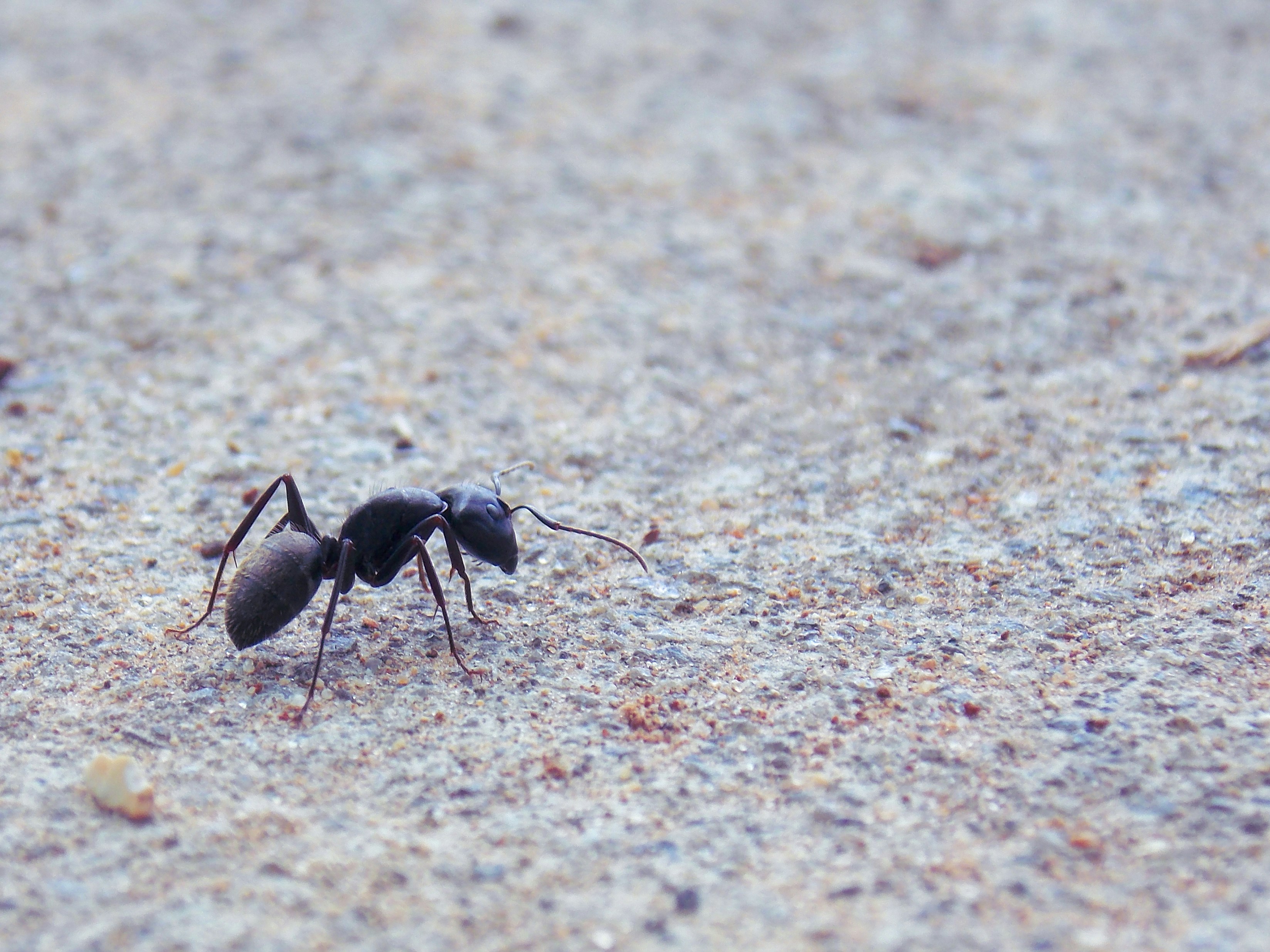
Ants are social insects that live in colonies, ranging from a few dozen to millions. They are highly organized and constantly forage for food, often becoming a nuisance when they invade homes and businesses. Different species pose different threats.
Ants typically nest outdoors in soil, under rocks, logs, or pavement, but they will readily enter homes in search of food and water. Some species, like carpenter ants, establish nests inside wood structures, hollowing out galleries. They follow scent trails to food sources and can quickly establish long foraging lines.
Certain species, like carpenter ants, can cause significant structural damage by tunneling through wood (door frames, window sills, structural beams) to build their nests. Unlike termites, they don't eat the wood but hollow it out, compromising its integrity over time. Other species, like pavement ants, can contaminate food sources. Ant colonies can grow rapidly, and once they establish a nest inside walls or flooring, they become difficult to eradicate with DIY methods, often requiring professional treatment for full removal.
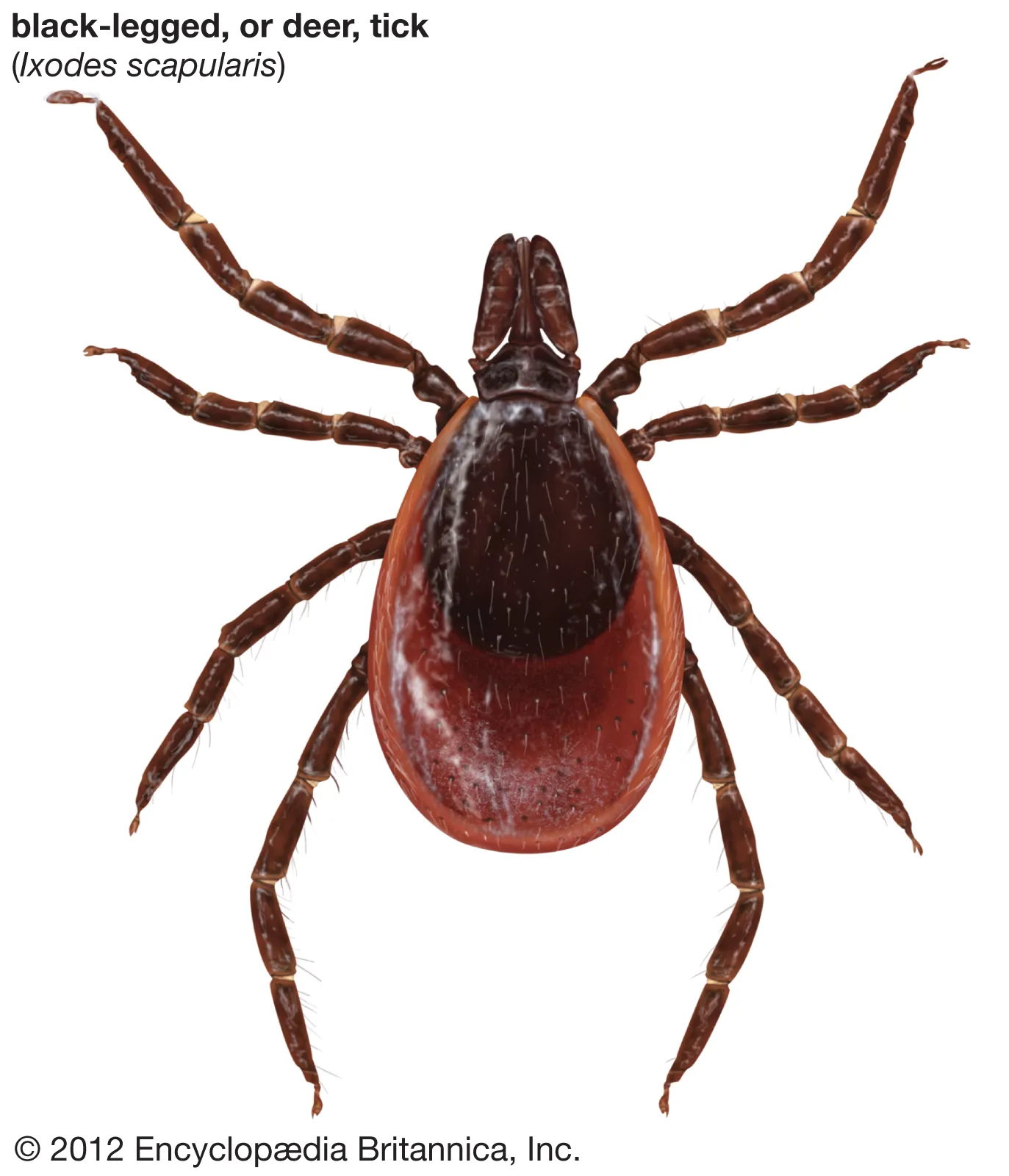
Ticks are small arachnids related to spiders and mites. They are external parasites that feed on the blood of mammals, birds, and sometimes reptiles. While typically more of an outdoor pest, ticks can attach to pets or people and be brought into homes, posing a significant health risk due to their ability to transmit various diseases.
Ticks live in grassy, brushy, or wooded areas, and even in leaf litter. They don't fly or jump but instead "quest" – they climb onto vegetation and wait for a host to pass by, then latch on. Once attached, they feed for several days. They can be brought indoors on pets or humans, and though they prefer to attach to a host, they can survive for a time in indoor environments.
Ticks are dangerous primarily because they can transmit various pathogens that cause serious illnesses in humans and animals. The most well-known is Lyme disease, transmitted by the Blacklegged Tick. Other tick-borne diseases include Anaplasmosis and Babesiosis. Symptoms can range from fever and rash to neurological problems and joint pain. Early detection and removal are crucial to reduce the risk of disease transmission.
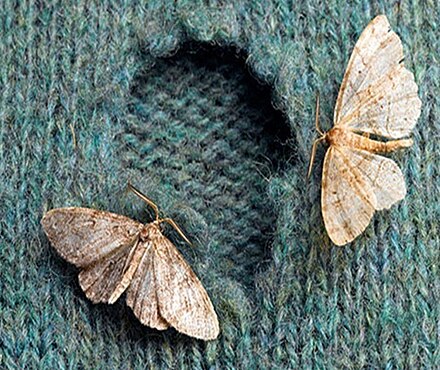
Clothes moths are small moths whose larvae cause significant damage to natural fibers. They are often mistaken for pantry moths, but their feeding habits are distinctly different, focusing on fabrics rather than food.
Clothes moths lay eggs on natural fibers such as wool, silk, fur, feathers, and some synthetic blends. The larvae then feed on these fabrics, causing holes in clothing, carpets, upholstered furniture, and other textiles. Infestations often go unnoticed until significant damage has occurred because the adult moths are secretive and the larvae blend in with their surroundings. They thrive in dark, undisturbed areas like closets, attics, and storage boxes.
The primary threat from clothes moths is the irreversible damage to valuable textiles. They can destroy expensive clothing, antique rugs, furs, and other cherished items made of natural fibers. This damage can result in significant financial losses and the destruction of sentimental items.
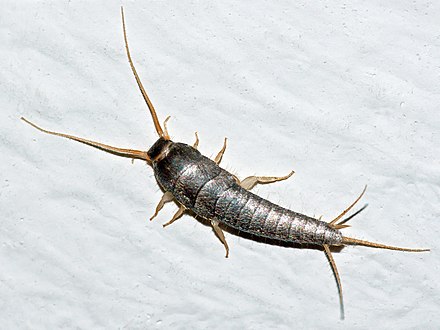
Silverfish are small, wingless insects known for their distinctive "fish-like" movements and silvery-gray bodies. They are nocturnal and prefer damp, dark environments, feeding on starches and sugars found in common household items.
Silverfish thrive in high humidity and are often found in bathrooms, basements, attics, and kitchens. They are attracted to paper products, glues, starches, cellulose, and some food items like cereals. Over time, they can damage wallpaper, books, important documents, photographs, natural fibers (cotton, linen, silk), and even food stored in pantries.
Silverfish primarily cause damage to property by feeding on items containing carbohydrates and proteins. They can destroy irreplaceable historical documents, valuable books, family photos, wallpaper, and clothing. While they don't pose a direct health threat to humans, their damage can be extensive and costly, especially in environments with high humidity and abundant food sources.
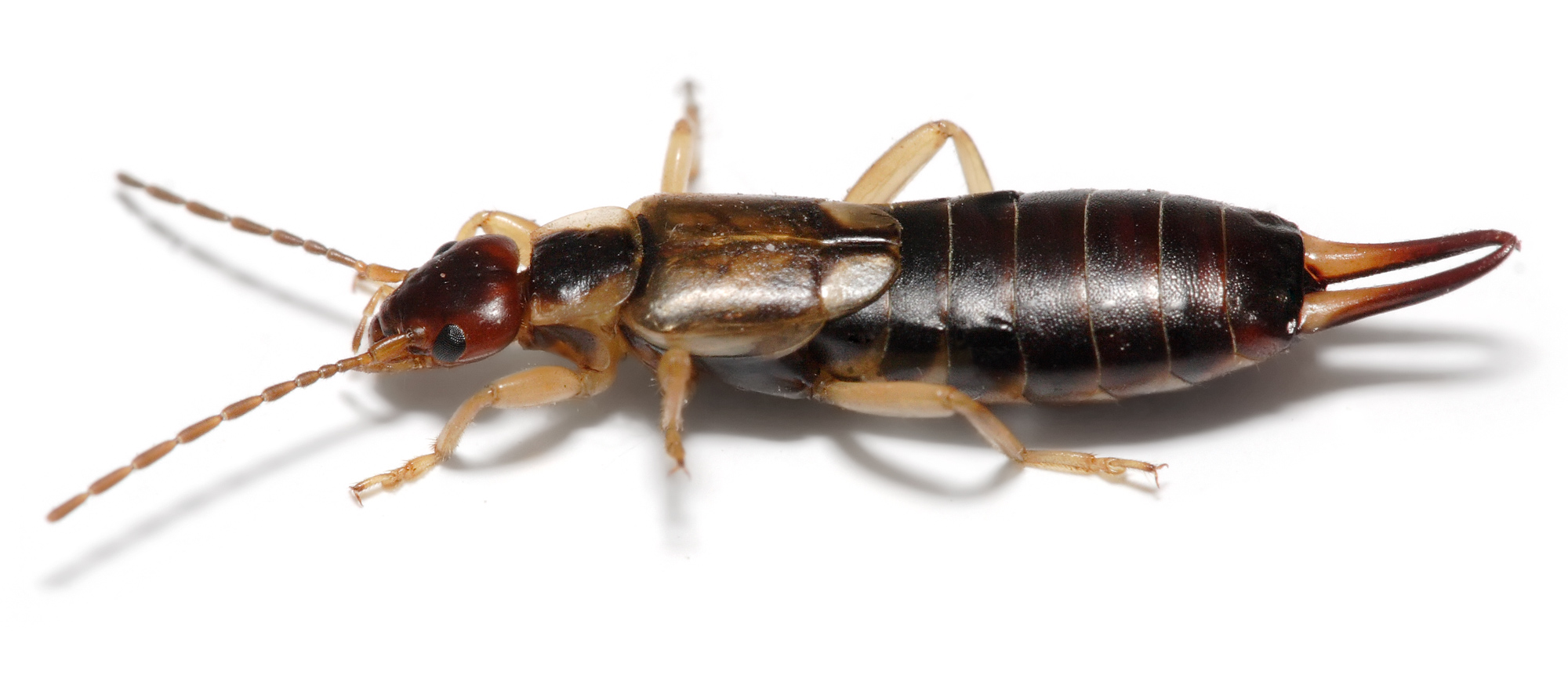
Earwigs are distinctive insects recognized by the prominent pincer-like appendages (cerci) at the rear of their abdomen. They are mostly nocturnal and prefer moist, dark environments, often found outdoors but can enter homes, especially during dry or excessively wet weather.
Earwigs primarily live outdoors under rocks, logs, leaf litter, mulch, and in damp soil. They feed on decaying organic matter, insects, and sometimes plants. They can enter homes through cracks in foundations, gaps around windows and doors, or through openings in basements and crawl spaces, seeking shelter or moisture. While the myth of them crawling into ears is false, their appearance can be unsettling to homeowners.
Earwigs are generally considered nuisance pests. They can cause minor damage to indoor plants, stored food items (though rare), or damp wood. While their pincers look intimidating, they rarely pinch humans and when they do, it's typically harmless, similar to a light pinch. The primary concern for homeowners is their unsettling appearance and the sheer number that can sometimes invade.
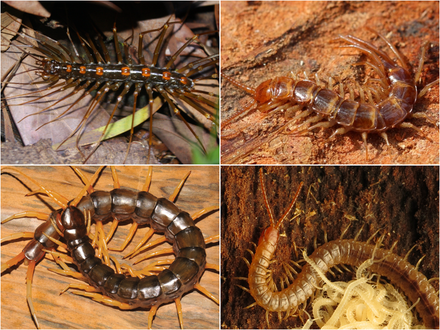
These multi-legged arthropods are often grouped together due to their similar appearance but have distinct differences in diet, habits, and body structure. They are typically outdoor dwellers but can find their way indoors, especially when outdoor conditions become too dry or too wet.
Both prefer dark, damp environments. Outdoors, they are found under rocks, logs, leaf litter, compost piles, and in mulched areas. Centipedes are predators, feeding on insects and other small arthropods. Millipedes are decomposers, feeding on decaying plant matter. They enter homes seeking moisture, often found in basements, crawl spaces, bathrooms, and garages.
Centipedes and millipedes are generally nuisance pests and do not cause structural damage. Centipedes can bite if handled, causing a mild, localized reaction similar to a bee sting, but this is rare. They are actually beneficial as they prey on other household pests like spiders and cockroaches. Millipedes do not bite but can release a foul-smelling liquid when disturbed. Both can be unnerving to homeowners due to their appearance and movement, but are largely harmless to humans and property.




